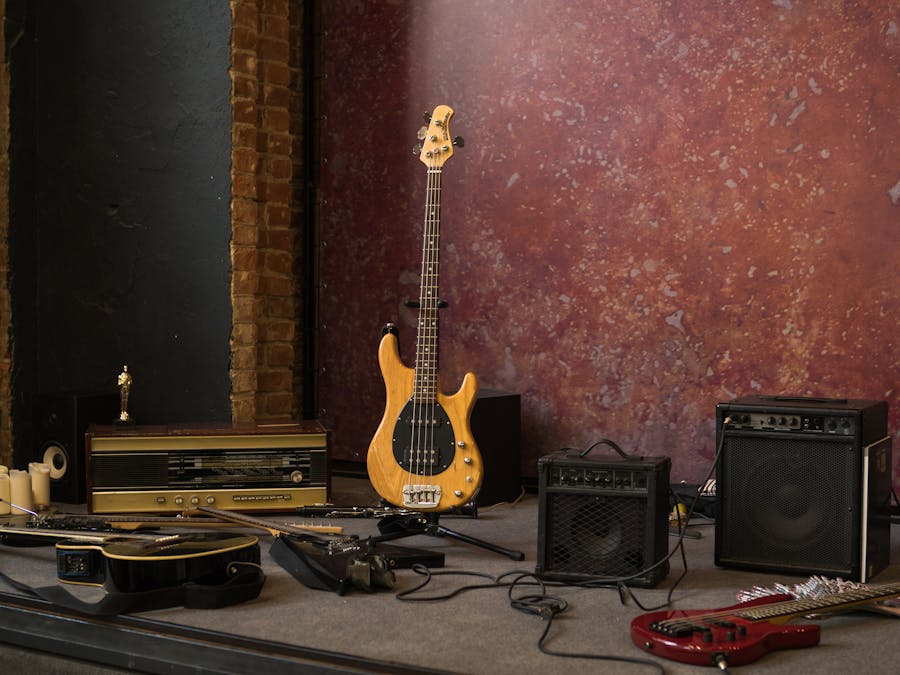 Piano Guidance
Piano Guidance
 Piano Guidance
Piano Guidance

 Photo: Tirachard Kumtanom
Photo: Tirachard Kumtanom
First, avoid placing it in front of a window – especially a single pane design. Direct sunlight and exposure to the greater temperature changes can damage the finish and cause premature aging. It can also cause it to go out of tune more quickly.

If you search for lists of the best jazz piano players, you'll almost always find Herbie Hancock. His innovative playing cuts across styles from...
Read More »
Pauer's key characteristics for F major is that it is “at once full of peace and joy, but also expresses effectively a light, passing regret—a...
Read More »Clients often ask “Where should I place a piano in my home”? Or, “Is it bad to put to place a piano against an outside wall”? Or sometimes just, “What is the best direction to place a piano”? These are great questions. This is definitely something to spend a little time deciding as it can affect the tuning stability, performance quality and longevity of the instrument. There are a few things to consider when choosing a location for your piano. First, avoid placing it in front of a window – especially a single pane design. Direct sunlight and exposure to the greater temperature changes can damage the finish and cause premature aging. It can also cause it to go out of tune more quickly. Adding window coverings can help stop the sunlight problem, but will do little to retard the temperature fluctuations. In many areas of the United States, the temperature fluctuation of a home’s outside walls are drastic. Placing a piano against or close to these walls should be avoided. Here in Southern California this is not a significant problem if the home is newer and has been constructed using modern insulation codes. When in doubt, try placing your hand against the outside wall and compare its temperature to other inside walls. If it feels significantly warmer or cooler, avoid placing your piano near it. Next, look where the heating and air conditioning vents are located, and avoid placing the piano in the direct path of the airflow. This will also cause the piano to go out of tune more quickly. Here’s why. The sounding board of the piano is made of wood, a material that will absorb and desorb humidity. Expansion and contraction of the sounding board, due to changes in humidity levels, are a major reason pianos go out of tune. The percentage of moisture present in air is directly related to its temperature. Warmer air can, and often does, have higher levels of humidity. In the colder months, we turn up our furnaces to raise the temperature of the air. However, this warmed air contains the same amount of moisture. But, this makes its relatively humidity lower when compared to the warmer air temperature. Your house becomes dryer or less humid. This causes the piano sounding board to dry out and contract. The opposite happens when we turn on our air conditioner in the warmer months. Also, avoid placing the piano in the pathway of a breeze. A common example is one that is created when you open a window on the back side of your home coupled with having the front door open to create an airflow through the house. Doing this affects the piano in a similar way as placing it near an air vent. Another consideration when placing a piano relates to how it sounds in a room. The bottom side of a grand piano and the back side of a vertical piano are open by design. The size and shape of the room, as well as, wall and floor surfaces can have a lot of influence on the loudness and tone of your instrument. Hard surfaces in a small room can make an otherwise nice sounding piano too loud and bright. This is especially true for grand pianos on hard tile floors. Conversely, many overly bright pianos can sound more pleasing when placed in a carpeted room with soft furniture and wall fixtures.

Blues guitar keys The two most common keys in blues music are E and A. There are others, but these two keys are the most common.
Read More »
100 Greatest Guitar Intros Ain't Talkin' 'Bout Love. Alive. All Day And All Of The Night. All Right Now. American Woman. Aqualung. Are You Gonna Go...
Read More »The Most Evil Chords in Music C Diminished 7. D Minor (add b6) Dm/G.
Are you looking for evil sounding chords to use in your music? Now, there are of course different “types” of evil sounding harmonies in music. And then there are variations of these main types, which you can shape and color with chord inversions, different choices for layering certain notes, weight and instrumentation per voice etc.

From slowest to fastest: Larghissimo – very, very slow (24 bpm and under) Adagissimo – very slow (24-40 bpm) Grave – very slow and solemn (25–45...
Read More »
With the perceived importance of the good old '50 quid man' on record sales, you might be surprised to know that, according to new research by IPC...
Read More »
With average-sized hands, if you casually spread your hand across the keys, its span will measure around 6.7 inches and can cover an octave. If you...
Read More »
The Cadd9 guitar chord is major chord with an additional note tacked on for extra flair. In addition to the C major chord it represents, it...
Read More »